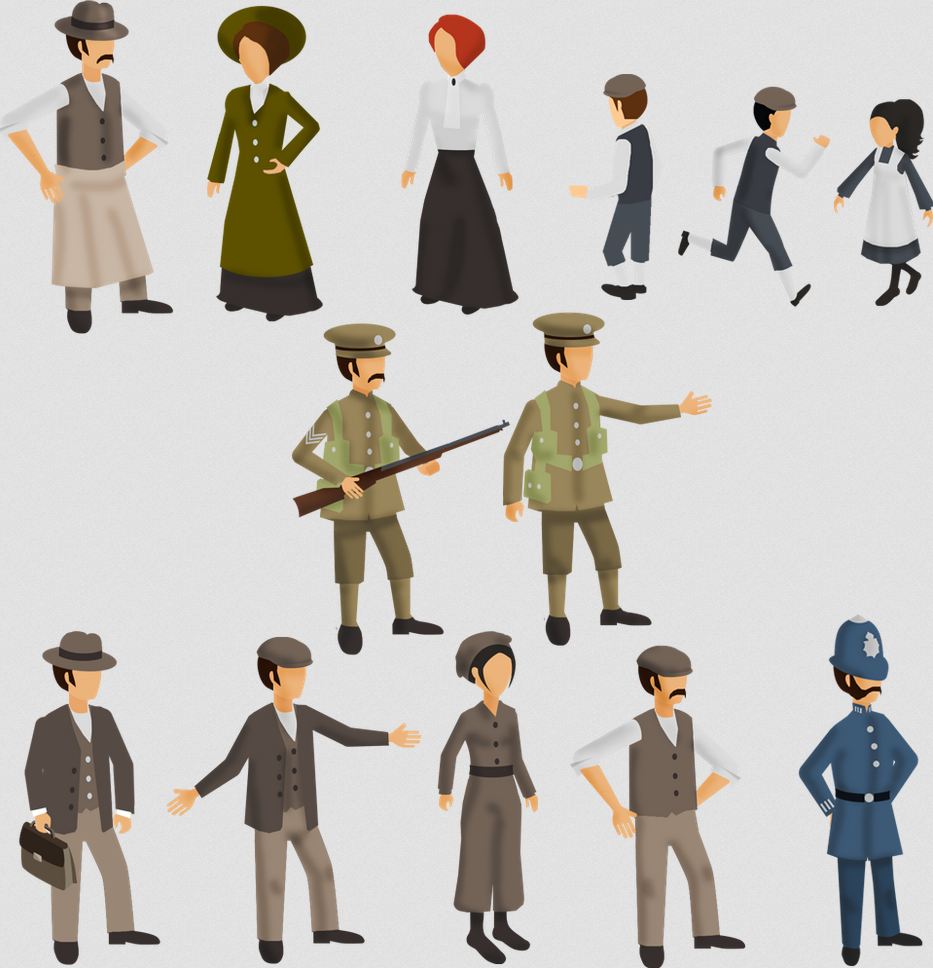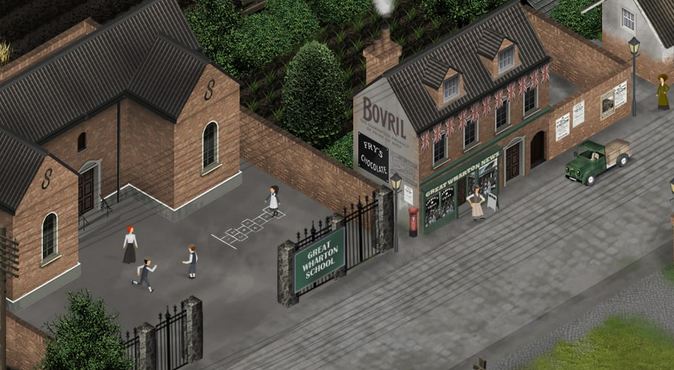Within the archives there are many stories of events on the Home Front during the First World War. In considering the best way to tell these stories, and to showcase related documents, the idea of ‘Great Wharton’ emerged.
Great Wharton is an online, graphic representation of a fictionalised village. People can explore it, and read little known stories uncovered in our documents by our Modern Domestic Records team.
We’ve not created anything like Great Wharton before, so we were keen to find out how what people thought of a prototype we had developed – this is called user testing.
User testing is important in all the work we do: finding out people’s thoughts and seeing their reactions ensures that we develop designs in ways that are user-focused. Throughout the design process, we get feedback on different aspects of a design (such as functionality, look and feel) as well as the way in which information is structured and understood. The method of user testing will depend on the stage of the design and what the user research goals are.
Testing Great Wharton
As the purpose of Great Wharton is to engage people who are not so familiar with the documents held by The National Archives, we decided to test the concepts with people outside of our buildings. We were lucky enough to be given the opportunity to conduct some ‘guerrilla’ user testing at the National Maritime Museum, a method that allows us to gain quick feedback on an initial design. The feedback on this initial design then informs the decisions made later on in the design process, ensuring that the needs of the user are at the heart of the process.

A number of characters were designed to represent the stories in Great Wharton.
When planning the user testing it was important that we identify our key goals. We were particularly interested to find out more about:
- the perception of the look and feel of Great Wharton
- if people found it interesting
- if it was clear how to interact with Great Wharton
- if the stories communicated in a clear and engaging way
- the extent to which Great Wharton would encourage non-archive users to engage with our digital documents, or even visit The National Archives?
On the whole, there was a great deal of enthusiasm for Great Wharton as a way of exploring the home front experience during the First World War. People of all ages were fascinated by the graphics and enjoyed exploring Great Wharton to discover the stories and related documents. The focus on personal stories also provided a unique insight that people were keen to explore further by clicking through to further information about the documents.
Making changes
The prototype we used for user testing had a limited number of images. People commented that they would like to see more images, as they liked associating the stories with documents held by The National Archives. Through identifying a demand to be able to access digital copies of documents, a decision was made to digitise more documents.
Early stage user testing has been valuable in focusing the team on user needs, as well as spurring on the development of Great Wharton. The positive feedback has encouraged further delving into the archive to seek out more stories exploring a range of themes. The village of Great Wharton will also be getting additional buildings and characters to allow for more opportunities to explore the Home Front experience.
Great Wharton is due for release in early September 2016. By then, we hope to have conducted further user testing and iterations of the design. We are very thankful to the National Maritime Museum for hosting us and for their visitors taking the time to speak to us.

What a great way a getting people more excited about history and maybe in some cases jogging memories into revealing yet more about the past.
Figures need eyes. Don’t need noses or mouths, but need eyes. Blank faces unsympathetic.
I agree on the lack of faces, you also need some elderly people and I hope the car is not travelling on the wrong side of the road!.
Isn’t that a delivery truck? Would it have left-hand drive though?
What a great idea! Many of our One-Placers have been looking at the impact of the First World War on their study places (villages and towns) and some studies are entirely focused on the WW1 period.
Agree the figures need facial features. Would be interested to see what gamers think of the idea may have useful suggestions? If it encourages more interest in history great. Local history websites may never be the same. Are you going to share your experiences/expertise when it is finished?
Hi Jacqui,
We are currently in the early prototyping stages so maybe limited in what we can offer, however to discuss any potential opportunities for knowledge sharing on our experience of the project please contact us via webmaster@nationalarchives.gsi.gov.uk
Best,
Sarra
A great idea! I don’t find the lack of facial features a problem, but think perhaps there should be more women of different ages and also more younger people to encourage engagement from schools and colleges.
Thank you for all your comments. They have given us a further insight into how Great Wharton is perceived and provided us with some interesting points to consider.
Best,
Sarra
Dear Sarra
this looks a great project! If you allow students to stage little events (machinima, films, interactive narrative) so they have to read and interpret the archives to create their presentations, this might also help engagement.
I am also looking at suggesting similar projects to the GLAM industry in Western Australia so will be very keen to see how your project develops.
Nice attempt to get the information visualised. Is it possible to gain any reference on the resource itself? Don’t want to seem flippant, but as a final result of the job are you going to rustle up some sort of a film, based on the strict scenario, or provide the opportunity for a user to have a virtual walk by the reconstructed 3D world (using so-called “free camera” concept)? And 3D models of people in historical costumes would look more “natural” than plain “billboards” (though need more resources, of course)
Dear Dmitry
Thank you for your comments. We currently have no plans to develop a 3D or film version of Great Wharton as it would add another level of development work.
Best,
Sarra
[…] that it’s designed to educate – it’s really quite fun. There is a also a great blog post all about the creation and user testing of the Great Wharton project, where you can read about how […]